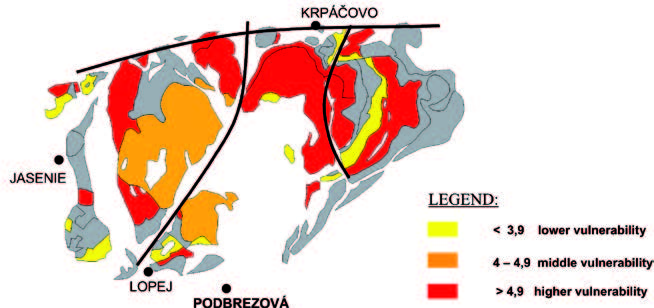Groundwater Vulnerability of the Karst - Fissure Hydrogeological Structure of South – Facing Slopes of the Nízke Tatry Mts., Slovakia
DOI:
https://doi.org/10.3986/ac.v36i2.195Povzetek
An “intrinsic vulnerability” (according to Zwahlen et al., 2004) to any contamination in general is considered using Malík´s extension (2005) of the Kullman´s method (2000), based on the assessment of the degree the rock disruption and karstification, affecting the shape of spring discharge recession curves. It is based on the presumption that the intensity of natural contamination attenuation processes depends on rock disruption/karstification. The method is applied on the Mesozoic rock environment of the most important hydrogeological structure in the southern slopes of the Nízke Tatry Mountains. Hydrograph analyses of groundwater depletion in the gauged or exploited springs were used for assessment of groundwater vulnerability to human and/or natural pollution. Differences in character of individual depletion hydrographs enable assessment an extent of absorption and elimination processes during the groundwater penetration through the rock environment from the infiltration area to the outflow in the spring or exploited source. The depletion hydrographs reflect not only the character (effect) of outflow area but reflect the effects whole infiltration and accumulation area. In total, 68 individual recession curves from 9 gauged springs were analysed. Obtained degrees of groundwater vulnerability are evaluated by 10 degree range of the Kullman´s vulnerability scheme, adjusted by Malík. The reached vulnerability values are consequently applied and assigned to the lithological types of discharge area of gauged springs. This study also describes an existence of individual laminar and turbulent sub-regimes that occur in the karts-fissure rock environment, the type of rock disruption from open micro– to macro fissures - to karst channels and subsequent estimation of the karstification degree.
Prenosi

Prenosi
Objavljeno
Kako citirati
Številka
Rubrike
Licenca
Avtorji jamčijo, da je delo njihova avtorska stvaritev, da v njem niso kršene avtorske pravice tretjih oseb ali kake druge pravice. V primeru zahtevkov tretjih oseb se avtorji zavezujejo, da bodo varovali interese založnika ter da bodo povrnili morebitno škodo.
Podrobneje v rubriki: Prispevki




